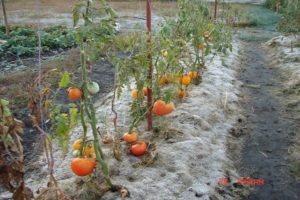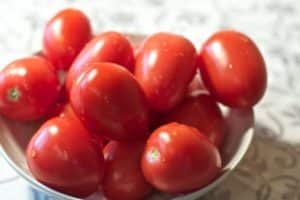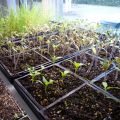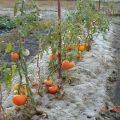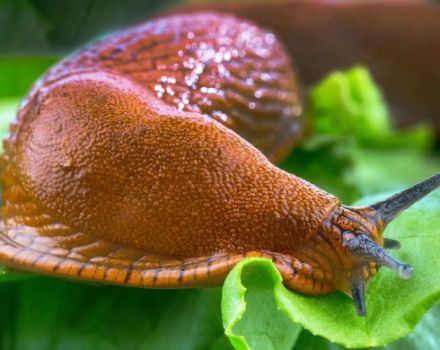What is the optimal temperature for growing tomato seedlings
The temperature for tomato seedlings is a variable constant that should vary depending on the phases of plant development. By varying the temperature indicators, you can hold back the rapid growth of tomato tops or cause intensive branching of the root system. With the right temperature, you can stimulate seeds to accelerate germination or prepare seedlings for planting in the ground. For growing tomatoes, maintaining the correct thermometer mark is no less important than timely watering or high-quality feeding.
Thermal preparation of seeds
Heat treatment of tomato seeds is not included in the number of mandatory procedures for growing a crop and not all manuals include this point, but it has been noticed that tomato seeds that have undergone heating sprout more amicably and form a stronger sprout than unheated seeds. Procedure options preparation of tomato seeds depend on the preference of the owner of the summer cottage. Let's name the main methods of temperature exposure to tomato seeds:
- The "winter" method used at the end of March - tomato seeds are tied in a knot using a simple handkerchief and suspended next to the centralized heating battery until the very moment of germination - until April - May;
- on a table lamp cap turned upside down, put a clean sheet of paper and sprinkle tomato seeds in a thin layer; warming up time - three hours with periodic mixing of seeds;
- so that the seeds germinate faster, use an oven preheated to 50-55 C, in which a baking sheet with tomato seeds is placed for two hours;
- heating with water is used immediately before germinating the seeds - for this they are wrapped in a cloth bag and dipped in hot for 2.5-3 hours (50-55 C) water; during this time, hot water is added so that the optimal temperature regime is kept.
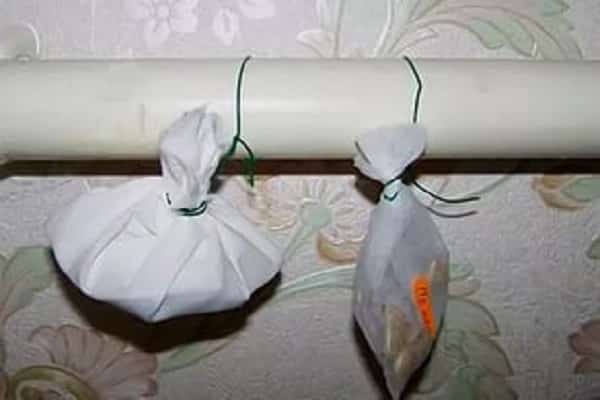
Warming up the seed material has an effect on the quality of germination and accelerates the timing of the harvest, the tomato grows faster, however, to resist diseases, prevent a negative reaction of tomato seedlings to possible cold snaps or excess (lack) of moisture, use the opposite method of thermal preparation - hardening tomato seeds at low temperatures.
For the procedure, the tomato seeds must be placed in a saucer, filled with water, covered first with gauze, and then with cellophane and placed in the freezer for a day. In this case, the temperature should not be higher than -1 C and not below -3 FROM.Then contrast is made by transferring frozen tomato seeds for another day, to conditions of ordinary room temperature. In total, hardening by such methods is carried out two to three times. During processing, tomato seeds can germinate, and after this happens, hardening is stopped.
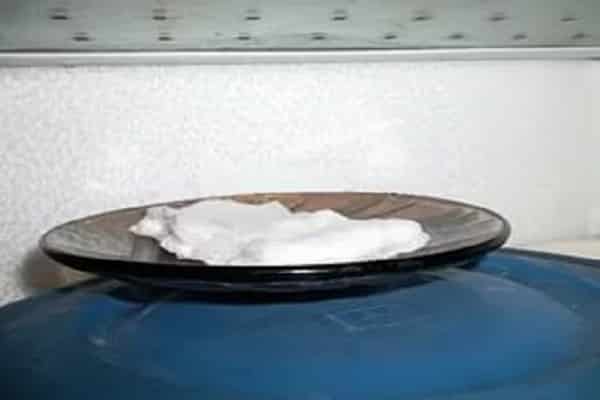
At what temperature to germinate seeds
One and a half months before the start of the summer season and the time when the tomato seedlings will need to be transplanted into the ground, sprouted tomato seeds are planted in seedling containers. From this moment until the first sprouts hatch, the optimal temperature for the germination of tomato seeds is 21-23 FROM.
Under these temperature conditions and good soil moisture, you can see the tomatoes sprout after just a week.
When this happens, boxes with seedlings are placed on the lightest window sills of the house or on the lightest areas of the greenhouse and try to lower the overall temperature to critically acceptable levels while the tomatoes sprout. During the day, the minimum temperature for seedlings is now 13 C, and at night 11 C. Similar acclimatization, during the beginning sprouting tomatoes, must go through without fail, since the procedure is responsible for the correct reaction of young plants to the effects of low above-zero temperatures.
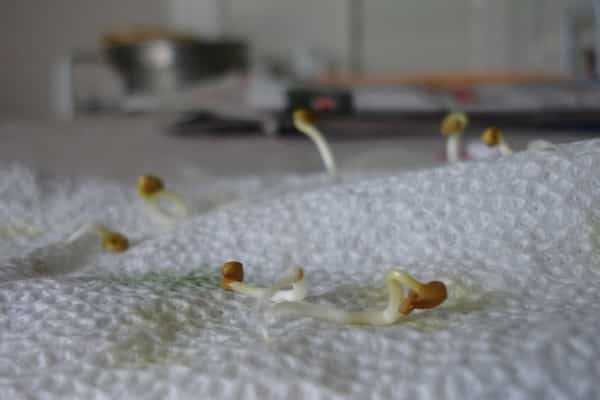
The next important step in growing tomato seedlings is picking the seedlings into separate pots. This procedure is stressful for immature plants, therefore preparation for it begins 3-5 days before manipulation and consists in placing seedlings in a temperature reduced to 17 C. If the climate is regulated by opening and closing window transoms, care must be taken to ensure that the tomatoes are not in a draft-free area.
The appearance of cotyledonous leaves serves as a signal that tomato seedlings are ready for picking. Tomato seedlings are buried in pre-prepared containers to the very leaves and watered with water kept at room temperature for three days. Then the tomatoes are shaded, without restricting the passage of sufficient ventilation for healthy growth, and the shelter is removed only after three days, when the plants are well rooted.

After picking, the temperature for growing tomato seedlings is lowered, bringing it closer to those indicators that corresponded to the care of newly germinated seeds - that is, in the daytime, it will be 19-21 C, and at night 12-14 C. Such a competent adjustment will subsequently allow the formation of abundant flowering with a rather modest development of greenery to the lower fruit cluster.
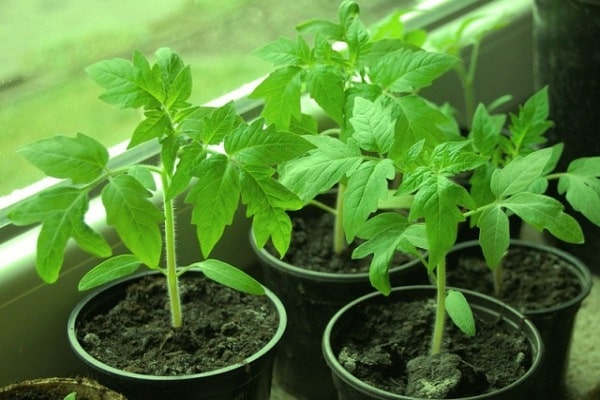
What temperature is needed for planting seedlings in the ground
After the appearance of the fifth leaf, it is no longer rational to keep the seedlings in a pot, as it begins to rapidly grow and form tops. 10-14 days before transplanting to a permanent place, tomato seedlings are hardened by gradually approaching conditions that will become the norm for the plant and, accordingly, should not cause discomfort.
To start hardening, prior to planting, choose a warm day without precipitation. Tomato seedlings are exposed in the greenhouse with the frames removed or on the balcony for half an hour, the next day for an hour, and so on, bringing the time of the plants to air up to six hours. Three days before transplanting, the seedlings must be left in the greenhouse overnight.

It is only possible to move plants outdoors when the risk of frost in your area is reduced to zero. Any subzero temperature for tomato seedlings is destructive, as well as too high (more than 30 C), although the degree of resistance to heat increases in the plant as it approaches maturity.
The optimum temperature for seedlings is well maintained in the greenhouse, but it is more important here than to keep the tomatoes from cold, to prevent the plants from overheating. If you do not periodically open the frames or leave the door ajar, tomato seedlings can simply bake in the created microclimate.
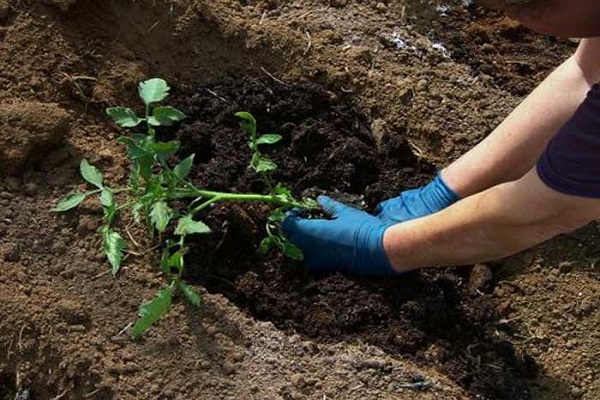
You can regulate the temperature by spraying using urea diluted in water in a weak concentration - 2 teaspoons of urea per bucket of water. This solution also stimulates the development of the bush and the tomato seedlings grow faster.
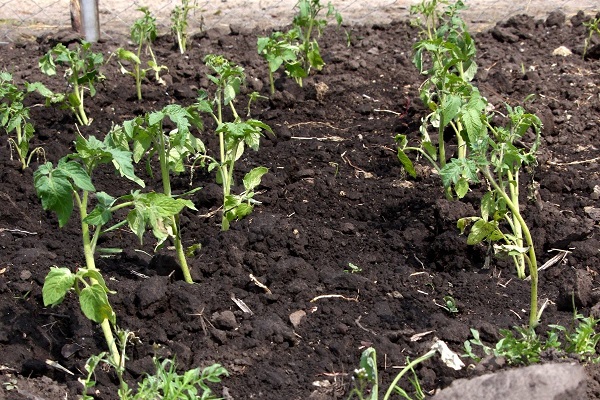
Saving tomatoes from summer heat and spring frosts
Tomato seedlings planted in open ground are especially dependent on the influence of sunlight, which affects not only the plants, but also the soil, drying it out and damaging the root system. It is possible to prevent cracking of the soil and "attract" the maximum possible amount of moisture to the tomato seedlings, in the form of morning dew, by mulching with straw or freshly cut weeds. On the side where the sun's rays scorch the beds during daylight hours, it is necessary to create a natural shield over the tomato seedlings in advance by planting corn, Jerusalem artichoke or sunflower.
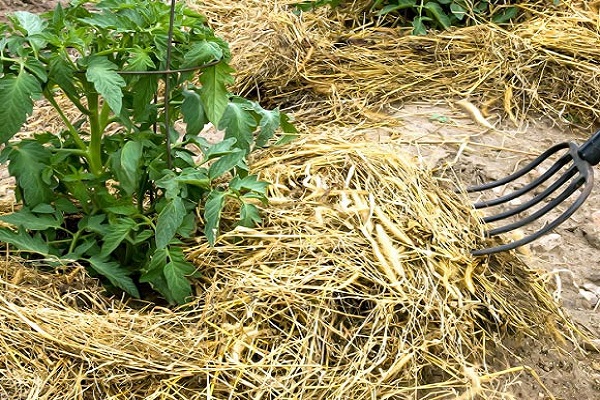
When growing tomato seedlings, it is important not to rush to transplant in open ground, correctly assessing the possible weather vagaries of your region. But it happens that frosts come in mid-June, when tomato seedlings are already starting to release fruit clusters and the whole crop becomes threatened. In this situation, you need a mobile and quickly installed protection in the form of aluminum arcs, over which the film is stretched. If frosts fell on the soil shortly after transplanting tomato seedlings, you can protect the plants individually by erecting a temporary cap from a plastic bottle with a cut off neck over each.
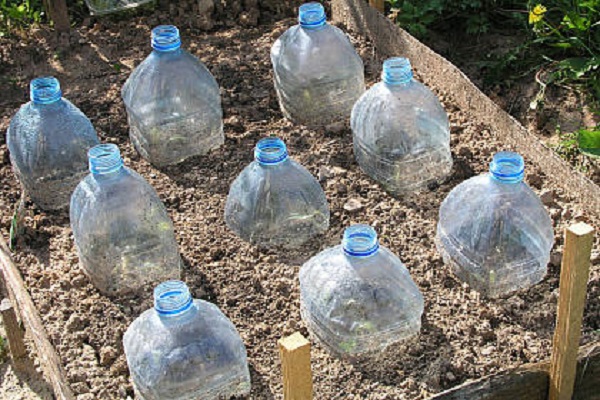
As you can see from the article, protecting tomato seedlings at a temperature level is no less important than moistening the soil or creating a comfortable nutrient medium. Starting from the moment when the seed germination temperature is set at the head of the process of laying the future crop and ending with careful protection of growing plants from the heat and cold of an open area, it is precisely maintaining the optimal thermometer scale that will help preserve the tomato harvest and make it an object of admiration for others.
